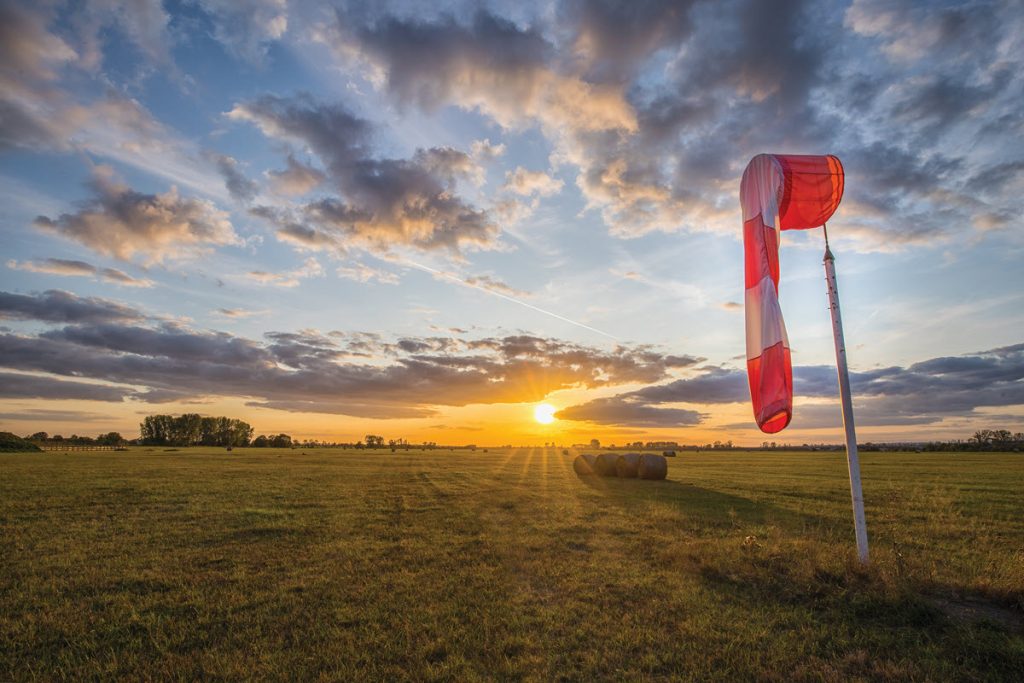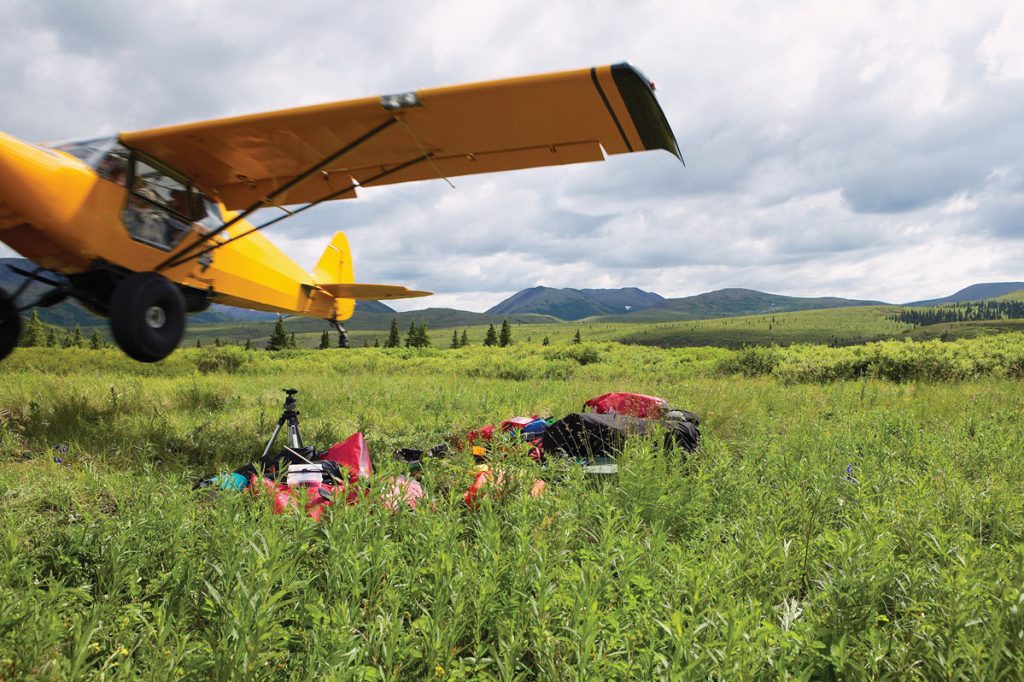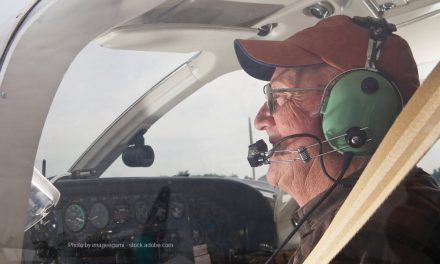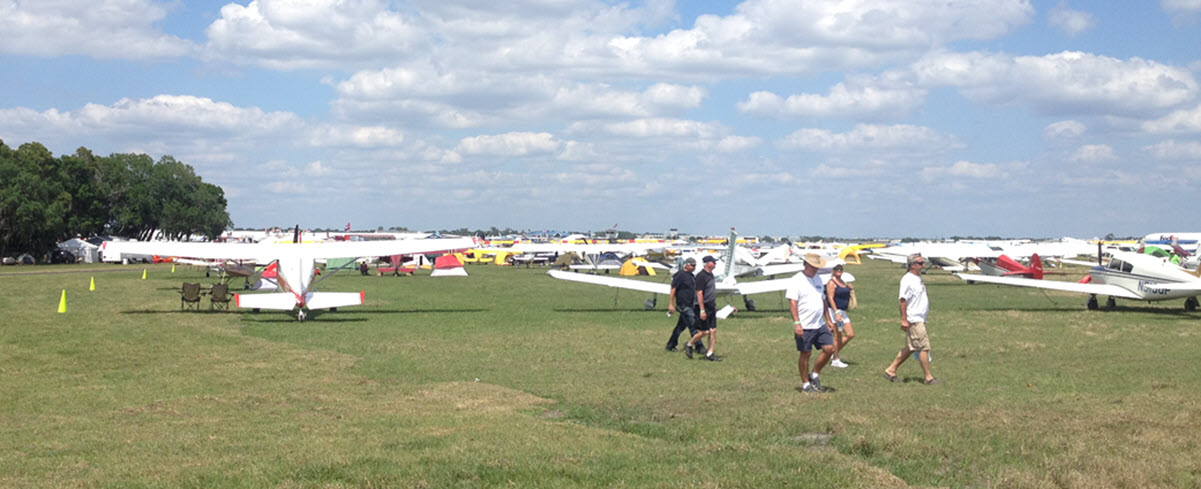
Off-Airport Landing Operations and Safety
Remember when you were training for your private pilot’s license and the instructor pulled the power back and declared an “emergency”? That was to prepare for an emergency off-airport landing only. But now as a licensed pilot, you see all kinds of opportunities to land off-airport and wonder if you should.
From an insurance perspective, an off-airport landing can be good or bad. For instance, years ago, a friend of mine landed in a farm field to pick up his girlfriend. He was a young pilot who knew the area and the field. But what he missed was the baling of the hay (and the bales) the day he was flying in. He and the Cessna 172 were unlucky enough to find a bale of hay, knocking out the nose gear. I also had a customer who landed on an old mining road in the mountains, with a very capable off-road aircraft, only to be surprised by a boulder, knocking out the landing gear and a propeller.
Personally, I have flown in and out of farm fields around my home state without any issues, as have many of my friends and customers. In fact, there are many aircraft in the Cessna and Piper line that just beg to land on a patch of land that’s not designated as a runaway.
I have known pilots who wouldn’t land on grass, but I have known others who really liked grass. When I had my Smith Miniplane DSA (darn small airplane), I would try to land on grass because it handled better on grass. Takeoff was fine on pavement, but it was always a handful landing on pavement. Honestly, I hated landing it on pavement. Like so many aircraft, the Smith Miniplane had more capabilities than the pilot.
That brings up a question. Is a runway necessary? I guess that depends on your definition of a runway. Have you watched the YouTube video of the plane that lands on a sandbar? Do you call that a runway? Does the FAA say what makes a runway?
What’s the Definition of a Runway?
After doing an internet search, I found a couple of definitions. According to the International Civil Aviation Organization (ICAO), a runway is “a defined rectangular area on a land aerodrome selected or prepared for the landing and take-off of aircraft along its length.” Merriam-Webster defines a runway as “a paved strip of ground on a landing field for the landing and takeoff of aircraft.”
But the FAA? I must have missed the definitions in my search. All I found was information about runway incursions, which, if you listen to the news, there have been quite a few recently. And all it says is “… a protected area of a surface designated for the landing and take-off of aircraft.”
What Do the FAA and Insurance Companies Allow?
You’re probably wondering where I’m going with this runway thing. Well, lately I’ve had several insureds asking about landing their aircraft in fields or on roads that aren’t designated airports. We’ve had requests for pilots who want to take their aircraft to a private unrecognized airstrip, like a farm strip. We’ve also had pilots who want to fly into the mountains and land in a field just for the fun of it. Some have been told that the FAA won’t allow that. Others have been told that their insurance company won’t permit it.
You might be surprised, but the FAA has an Off Airport Ops Guide. Who knew, right? This would indicate that the FAA does not restrict off-airport landing like some people think. As far as insurance, we’ll cover that in a bit, but let’s first discuss the FAA’s position on the topic.
FAA Guidelines
The FAA doesn’t really stop off-airport landings, but you just can’t go willy-nilly landing anywhere you want either. There are guidelines, and there are still laws to consider. Laws include not only the FAA airspace rules, but state, county, and city and town ordinances.
I do remember being told about some small airstrip in Kansas or Oklahoma that would let you land on the runway and taxi your aircraft down the street (or near the street) and park across from the local café. Around Sun ’n Fun, we used to go to a cool little airstrip in Florida that had a great restaurant on the field. I would assume your location has small places that are friendly to small aircraft at their local airport.
But if you can’t find an airport, and you really want to go to a specific location, it’s still possible. A friend and I flew into a small farm field in Nebraska to visit his family. He called ahead and talked to a farmer he knew of with a nice hay field that had been mowed, and he cleared us to land. We also checked for any FAA airspace limitations or town issues. It was a great flight and a short walk into town. And if you’re wondering, yes there were a few hay bales, but they were the big round ones and were located in a way to give us a clear straight shot. So a landing like this is possible, but before you go off full flap into a short grass field near a small town, check with all the authorities to make sure it’s okay.
I guess when you think about it, that’s the practical side of this. With a bit of preparation, there’s nothing stopping you from landing in a field or on a mountaintop. Except maybe insurance.
What to Consider for Off-Airport Operations
- Plan ahead for an off-airport experience.
- Read the FAA’s Off Airport Ops Guide.
- If you have insurance, check the policy for limitations.
- Review your aircraft’s short-field performance specifications.
- Check local laws and ordinances for where you want to land.
- Get short-field and nonpaved field training, and practice on a safe runway until you’ve mastered short, unusual field operations.
Insurance Company Perspectives
Insurance is what prompted this discussion. A pilot raised a question about wanting to buy a twin-engine aircraft and use a grass field or his own field. While many aircraft are capable of flying off grass or even unimproved fields, there are a few that probably shouldn’t. In this case, the aircraft was a Cessna 337 Skymaster. This is the push-pull model, with an engine in the front and rear. And yes, the plane is very durable, the gear is strong, and the propellers have good clearance, but from the insurance viewpoint, the underwriters don’t really like it living on grass, let alone unimproved landing areas. Yet this is a plane whose military version, the O-2 Skymaster, was often used for landing on unimproved areas in Vietnam.
Basically, most underwriters don’t like to put retractable-gear aircraft (singles or twins) on grass strips as a home base. That’s an important thing to remember — as a home base. That’s basically 51% of the time. There are some very good grass airports with well-manicured runways. And then there are some very rough ones.
Depending on the airport and the aircraft, a policy can be underwritten for some complex aircraft, but it is getting more difficult. You probably could get a Cessna R182 (RG) or a low-tailed Piper Arrow on a decent grass airport. But you won’t get a Mooney or a Cessna 210 or a Lance. Some of the issues the underwriters will talk about are ground clearance, runway requirements, and aircraft weight.
I can remember my father-in-law’s dealership giving demo rides in a 1978 Cessna R182 (RG) on a small grass strip in southern Iowa. We also had a normally aspirated Cessna 210 giving rides. Both aircraft were very capable, and it made a great impression on new buyers. Of course, the runway was relatively smooth and dry. If it was wet or there had been heavy rains, we would have never taken those two aircraft. I have even seen Cessna 402s landing on grass, gravel, and dirt. But it doesn’t matter if the aircraft is capable or not; it is the underwriter’s actuarial data that usually makes the decision.
Also, a few of the underwriting companies have runway length limitations that are calculated in relationship to elevation. So, let’s say you have a 2,000-foot runway at a 4,000-foot elevation. I know of one company that won’t offer a quote for a high-performance, complex single in that situation. I don’t think they would accept even 2,500 feet, let alone any old twins. I would guess you would be hard-pressed to get them to approve a Cessna 182 or a Piper Dakota.
But remember, this is for the home base, not for an occasional landing. So, if you’re not based on short grass or dirt, it doesn’t mean you can’t land there. If you’re on other than a paved surface with a fixed gear aircraft, know the performance numbers of your aircraft.
Years ago, I had an underwriter tell me that they like to see runways meet minimum criteria for the specific aircraft. This was before all the computerized algorithms in their quoting system, and they manually needed to decide if they would quote. The recommendation for the minimum runway length was to take the aircraft’s factory numbers for landing or taking off over a 50-foot obstacle. Using the longest distance of the two, add 500 feet, and that is the minimum runway for the aircraft. Of course, that doesn’t include elevation, and it assumes clear space on both ends, but it does give kind of a rule of thumb.
Also, look over your policy. Some policies will have language that excludes off-airport operations except in an emergency. I remember working on a quote for a Super Cub with a low-time pilot. One company offered a very decent quote, but the underwriter specifically excluded off-airport operations. I know it was a lower premium, but I told the customer that if I owned a Super Cub, I would be tempted to land off-airport sometime, and I don’t think I would want that excluded. But that’s just me. Yes, he did go with a different company.
I have landed on grass, gravel, dirt, in hay fields, and even on a runway made of seashells (that was in a 152 after a 10-hour delivery flight, but that’s another story), and the experiences have been great. It’s also true that there are pilots who have never landed off a paved FAA-approved runway and have told me that they don’t want to. And that’s okay too. But for me and many other pilots, there are a lot of small airports and fields that offer a great destination. Why not use them?
If you really want to get involved with the off-airport world, look into The Recreational Aviation Foundation. This organization “preserves, improves, and creates airstrips for recreational access.” Visit their website (theraf.org) for more information.






